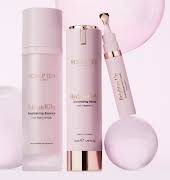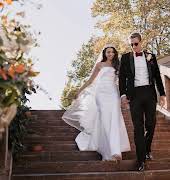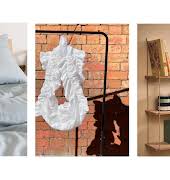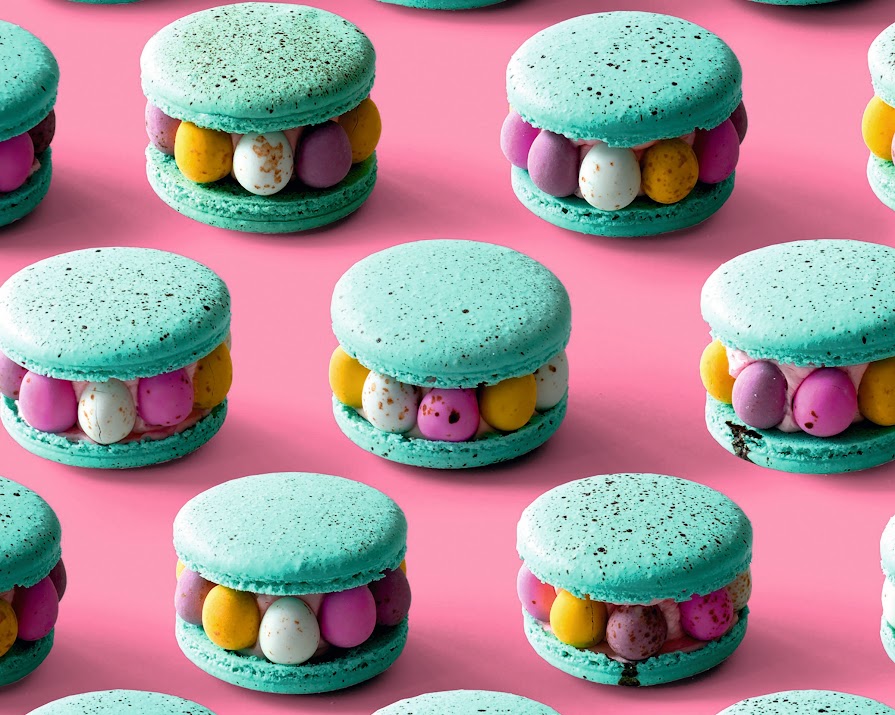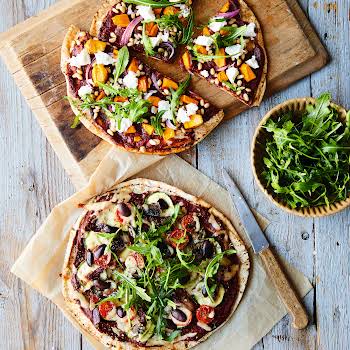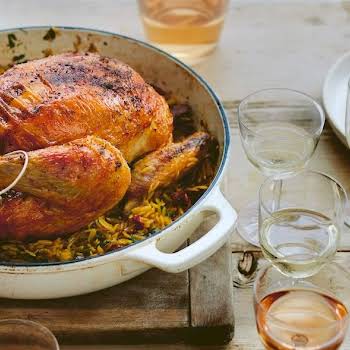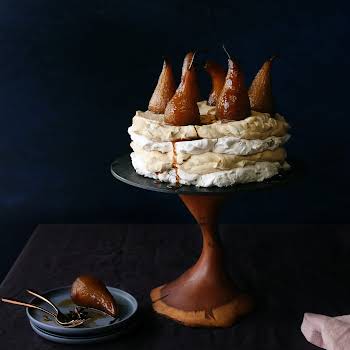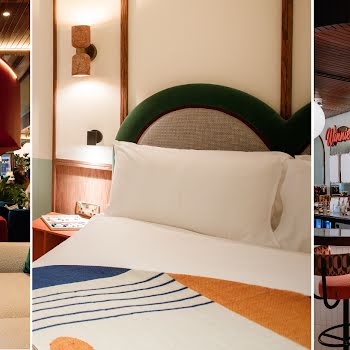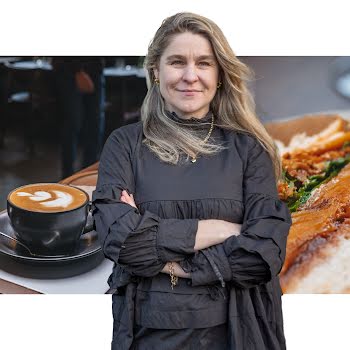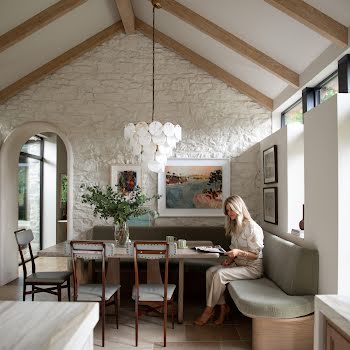By Meg Walker
10th Apr 2022
10th Apr 2022
One of my favourite things about Easter is chocolate. I mean, I’m an adult now, so I can stay up as late as I want and eat as much chocolate as I like, right? No. But Easter is the perfect time of year to have a cheeky helping of chocolate. My favourite choccy eggs are the speckled ones – they’re so pretty! So, here’s my version of it in a macaron.
Speckled Egg Macarons
Makes 15 sandwiched macarons
Ingredients
For the frosting
2 tsp strawberry flavouring
1 drop pink food-gel colouring
1 batch Swiss meringue buttercream frosting (see recipe below)
For the macarons
1 batch Vanilla macarons (see recipe below)
1 drop sky-blue food-gel colouring
3 drops teal food-gel colouring
For the chocolate splatter
3 tbsp sifted unsweetened (Dutch) cocoa powder
2 tbsp boiling water
For the decorations
500g mini speckled Easter eggs
Vanilla Macarons
If you’ve ever felt defeated by this little French cookie, this recipe will make it feel less intimidating for you. There are two ways to make the meringue for macarons: the French
meringue method, where you simply add the sugar to the egg whites, or the Italian meringue method, where you make a hot sugar syrup and add it to the egg whites. I prefer the Italian method, as I find it yields much more consistent results. I recommend that you measure everything out before you start this recipe, because everything moves quickly when making macarons and you won’t have time to stop and measure things once you’ve started. After a couple of goes it’ll feel as easy as making cupcakes. It’s really not that difficult, promise!
Ingredients
150g almond flour
150g icing sugar
110g liquefied egg whites
150g granulated sugar
37g water (yes, grams!)
1 tsp vanilla extract or vanilla bean paste
Note: Guys, for all my macaron recipes, I’ve asked that the ingredients are given in weight measurements only. This is because you must weigh everything out precisely to get great, consistent results.
Method
Line two baking trays with silicone baking mats or baking paper (not greaseproof paper). If you’re using baking paper, you can dab the baking trays with a little of the macaron batter once you’ve made it. This will help the paper stick so that it doesn’t fly around in the oven and ruins your macarons.
Combine the almond flour and icing sugar in a food processor and pulse 4-5 times, or until well combined. (Take care not to pulse too much, otherwise you’ll risk releasing the oils in the almonds.)
Pulsing these ingredients does two things: it helps to get rid of any lumps in the sugar and helps to grind the almond flour to a finer consistency. Once you have pulsed the ingredients, sift them once through a fine-mesh sieve. Alternatively, you can sift the two ingredients together without first pulsing in a food processor, but make sure to sift them at least three times.
Transfer the almond mixture to a large, clean glass or metal mixing bowl. Add half the liquefied egg whites and use a spatula to mix everything together until the mixture forms a paste. Cover with plastic wrap and set aside at room temperature.
To make the sugar syrup, combine the granulated sugar and water in a small saucepan. Give it a gentle stir with a teaspoon to make sure they’re well combined. After this point, don’t mix the syrup again. Bring to the boil over a medium-high heat, then reduce the heat a little and simmer. As the syrup bubbles away, it will splatter small bubbles of sugared water on the side of the pan. Use a pastry brush dipped in a little water to brush the bubbles back into the syrup. This will help prevent the syrup from crystallising.
For this recipe, you’ll need a sugar thermometer to help you measure the temperature of the syrup. When the syrup reaches 115°C, add the remaining egg whites to the bowl of a stand mixer fitted with the whisk attachment and whisk on a medium-high speed to help break them apart and get them frothy.
When the syrup reaches 118°C, carefully pour the hot syrup into the egg whites in a slow and steady stream. Start by whisking on a medium speed for 1 minute, then increase the speed to high and whisk until the egg whites become frothy. Please be careful
when doing this part, firstly because the syrup is hot, but also because if you add your syrup too quickly, you’ll cook the egg whites and they’ll turn to soup. Once you’ve poured all the sugar syrup into the egg whites, continue whisking on high speed for about 3 minutes before adding the vanilla extract. It’s at this point that you can add the food-gel colouring to the meringue (about the 3-minute mark) – mix until well combined.
Continue whisking on high speed for another 4-5 minutes. Once the meringue has become thick and glossy and has cooled down almost to room temperature, stop the mixer and gently scrape down the bowl, then whisk on high speed for another couple of minutes.
The next part is the mixing stage, otherwise known as “macaronage”, and is super important. It’s where most people go wrong – including me, until I took a trip to Paris and was physically shown how to do it by a French pastry chef.
Grab a spatula full of the meringue and fold it into the almond-sugar mixture until well combined. This allows the mixture to thin out a little before you add the rest of the meringue. Different people mix macaron batter in different ways; some count the number of times they mix, but I think it’s better to know what consistency to look out for. I like to go around the bowl with my spatula and then through the middle. You want to continue doing that until you reach the “ribbon stage”. That’s when you know the batter is ready to pipe.
Spoon the batter into a piping bag fitted with a medium round tip. Pipe your macarons at about 5cm in diameter, on the prepared trays, being sure to space them 2cm apart. Gently
tap the tray on your work surface. This will help remove any air bubbles that might be lurking in your batter. It’s at this stage that you can add any small sprinkles or freeze-dried berries on top.
The next thing you want to do is let your macarons dry out in the open air for about 30 minutes to 1 hour (the drying time depends on the weather, or how much humidity is in the air). Drying your macarons helps them to form a skin. The skin is super important because it means that when you bake your macarons and the steam escapes from the shells, it will escape from the bottom, not the top, forming the iconic “feet” on your macarons. So, when you can gently prod your uncooked macarons and they’re not sticky to the touch, you know they’re ready to bake. Ten minutes before the end of the drying time, preheat a fan-forced oven to 140°C or a conventional oven to 160°C/gas mark 3.
Place each tray of macarons, one at a time, in the centre of the oven and bake for 12 minutes. If you feel your oven is causing the macarons to brown on one side (usually the side closest to the fan), turn the tray around about halfway through. Once they’re baked, let them cool completely before you try to remove them from the tray.
Swiss Meringue Buttercream Frosting
Makes 1 batch
Ingredients
200g fresh egg whites (usually about 6 large eggs)
200g granulated sugar
500g unsalted butter, softened
1 tsp vanilla extract or vanilla bean paste
Method
Begin by filling a large saucepan one-quarter of the way with water. Let it come to a gentle boil over a medium-high heat. Separate your egg whites from your yolks in a large, very clean, glass or metal mixing bowl. We only need the egg whites for this recipe, so you can store the yolks in an airtight container in the fridge to use for something else. (My go-to recipe for using up egg yolks is custard.) Add your sugar to the egg whites and use a hand whisk to mix them together.
Place your bowl on top of the pan of boiling water, making sure the bottom of the bowl doesn’t touch the water. This is called the double-boiler method and is a very gentle way of cooking or melting something.
Gently whisk your egg white and sugar mixture for about 3-4 minutes, or until the sugar is completely dissolved. Check that it’s dissolved by running it through two fingers. If you can’t feel the sugar granules, then it’s time to take it off the heat. If you can, then continue whisking for another 2-3 minutes and keep testing until you can no longer feel any granules.
Transfer the mixture to the bowl of a stand mixer fitted with the whisk attachment and whisk on high speed for about 4-5 minutes. The mixture will become thick and glossy and will begin to cool.
Gradually add the softened butter, 1 tablespoon at a time, while the mixer is on high speed. At first, your egg whites will deflate and look like the butter is causing them to split, but don’t panic! It will come back together. It takes a couple of minutes for the butter and meringue to become best friends.
Once you have added all the butter, add the vanilla extract and mix first on low speed to combine, then on high speed for 5 minutes. You’ll know it’s done when the frosting has come together, has turned pale in colour and is nice and fluffy.
If you find your frosting is too aerated, then mix at the lowest speed for about 10 minutes and it will become perfectly smooth again.
Add the strawberry flavouring and pink food gel to the frosting and mix until well combined.
To make your Speckled Egg Macarons…
To prepare the chocolate splatter, combine the sifted cocoa powder and boiling water in a bowl and mix until the cocoa powder has dissolved. It should be thin enough to splatter.
Once the macarons have cooled, dip a BRAND-NEW TOOTHBRUSH (brand new, people; these aren’t supposed to be toothpaste-flavoured macarons) into the chocolate splatter and run your finger along the bristles to splatter it onto the macaron shells. (Also, don’t
wear a white T-shirt while you’re doing this.) Leave them to dry for 30 minutes before handling them.
Fit the end of a piping bag with a round tip, fill with the frosting and pipe a blob of frosting on the flat side of half the macaron shells.
You’re going to use the frosting to help stand the eggs up. Add the mini eggs in a ring around the outer edge of the frosting, then sandwich with the remaining shells.

Extracted from Sugar Rebels by Nick Mackrides (Hardie Grant, approx €20). Photography © Nick Makrides.




